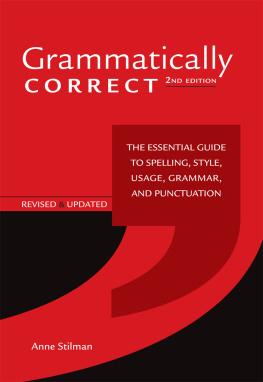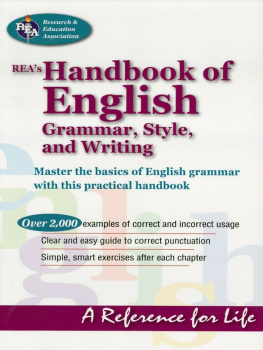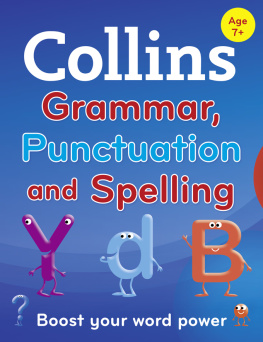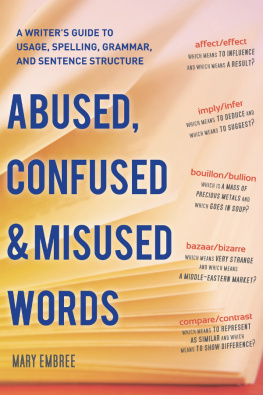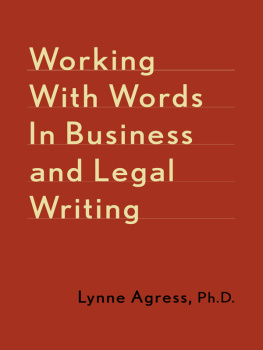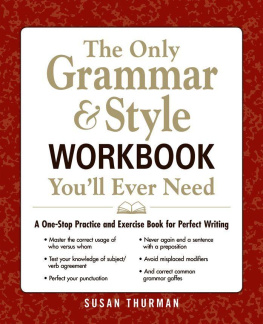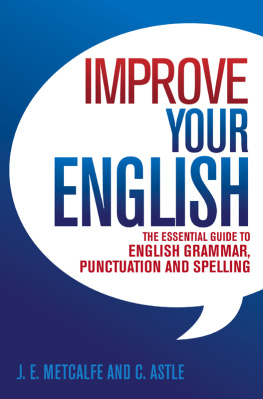Preface
IN THE YEARS SINCE I WROTE the first edition of this book, the English language has not changed a great deal, but much else has. Back in the mid-1990s, the World Wide Web was just poising to take off and Google was not yet a verb. If you needed an answer to something, your options were to haul out the family encyclopedia which if you were lucky was no more than a decade out of date or head to the library. Got a question today, on grammar or anything else? Type in a key word, click on Search, and choose from the ocean of hits that come up.
Reference books today, therefore, must compete against an instant, no-cost, and unimaginably vast resource when it comes to providing information. And yet, their very limitation can be a plus as well. While online searches are unmatched when it comes to looking up quick facts, they are not always the ideal route when there is a need to process, assimilate, and apply what is retrieved. Apart from the fact that the volume of information can be overwhelming, searches often yield fragments of answers that must be pieced together to gain a proper understanding; and the Web's egalitarianism, in so many ways a strength, means caveat emptor when it comes to accuracy.
In the first edition, my strategy for squeezing yet another writer's reference book into an admittedly already crowded field was to try to steer a middle course between too little and too much: providing enough detail to give a sufficient understanding of an idea while avoiding scholarly explanations. That approach continues to hold here. Obviously no single book on this subject can meet everyone's needs, but many lie too close to either end of the spectrum to be fully helpful. At the low end are those that are outright superficial, stating flat do's and don'ts without providing a sense of proportion, and leaving readers confused or unsatisfied. Those at the high end, however, may cover topics with such thoroughness as to be overwhelming. Aspiring writers may wish to know with certainty when to say I and when me , when to use which and when that , when to apply the semicolon and when the colon. But many of them wish to know all this without having it explained through intimidating terminology and academic rules.
With this type of reader in mind, I have put together a reference that steers clear of jargon and theory, focusing instead on practical strategies and intuitive explanations. Some specialized terminology is unavoidable, but in no case is a discussion presented solely in terms of grammatical constructs. Explanations are designed to get to the heart of a concept and provide a sufficient sense of when and how to use it, along with examples that show what ambiguities or misinterpretations might result if the rules are not followed. In cases where there is more than one acceptable way to do something, my approach is not to prescribe one over another but simply to describe the options.
As before, I've sought to liven up what can be a somewhat dusty subject by excerpting passages from very quotable literary works, both classic and modern. Academic explanations of how to use a certain punctuation mark or stylistic technique are all very well, but a real-life illustration can be a lot more convincing and engaging. My thanks to all those authors, both past and present, whose work I have cited. To further improve the usability of this book, some sections provide test-yourself exercises that readers can work through before checking the answers or suggested revisions. Such a hands-on approach is often the most effective way of getting knowledge to stick, as it gives learners a chance to recognize and correct their own errors.
While the basic structure of the book remains the same as in the first edition, I have revisited the explanations and examples, freshening up those that seemed dated, and have added several new topics. The content has been slightly rearranged and is organized as follows. Part 1 deals with aspects of individual words: spelling in a broad sense (hard-to-spell words, frequently confused homonyms, spelling variations, and hyphenation); the complexity and irregularity of English vocabulary (words that are frequently confused with others or are used in the wrong way, or that are often muddled in their derivative forms); and how the typography aspects of capitalization, italics, and boldface can be used to add emphasis or other special meanings. Part 2 tackles the bugbear of punctuation, describing the role of each mark in achieving clarity and affecting tone, and showing how misuses can lead to ambiguity. Part 3 looks at a number of grammar issues that frequently present difficulty: agreement of subject and verb, parallel structure, positioning of modifiers, use of tenses, use of pronouns, and active versus passive voice; it also provides a brief review of some conventions that are sometimes taken too seriously. (Note: in the first edition, this part was simply titled Grammar, but has here been renamed to avoid the implication that the other parts in this book are not on grammar. Topics such as the use of punctuation marks and the correct formation of negative and plural words are certainly aspects of grammar as well.) And finally, Part 4 moves on to the more nebulous area of style issues, ranging from sentence length and reading level to avoiding a biased tone.
For all the directives and conventions presented here, a perspective to keep in mind is that knowing the rules of the language does not mean applying them rigidly and unthinkingly. For one thing, these rules are not carved in stone a glance at any style guide of another era would show how significantly attitudes to language can and do change. More importantly, writing is a combination of science and art. The guidelines outlined in this handbook are concerned with the former: they are the tools you need in order to be able to express your ideas unambiguously and elegantly. To go beyond mere correctness, however, you must know when to accommodate your style to the expectations of your audience; when to bend a convention to capture a certain effect; when to go with common idiom instead of the rule book. Anyone armed with a keyboard can write. Good writing is achieved by those who understand innovation, creativity, and the needs of their readers.

